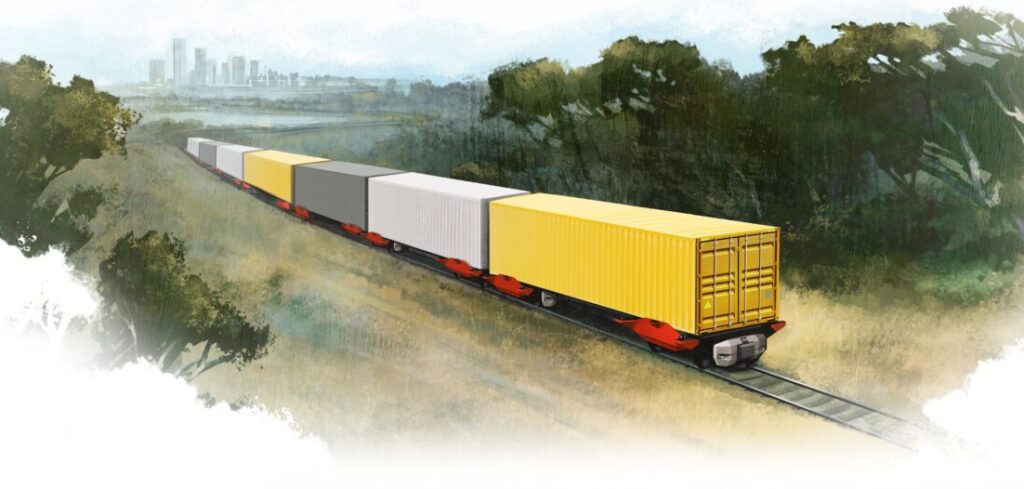The US Department of Energy (DOE) has awarded US$4,438,897 as part of its Advanced Research Projects Agency-Energy (ARPA-E) initiative to Parallel Systems, a company founded by former SpaceX engineers to create autonomous battery-electric rail vehicles.
The ARPA-E program, developed to advance high-potential, high-impact energy technologies, will fund a 29-month advanced testing program with Parallel’s autonomous, battery-powered rail vehicles and a range of partners starting in the second quarter of 2022.
As part of the funding, the merits and implementation strategy of Parallel’s autonomous freight system will be analyzed by DOE’s National Renewable Energy Laboratory (NREL) and the Rail Transportation and Engineering Center (RailTEC) at the University of Illinois, leveraging the ALTRIOS open-source railway modeling software. The vehicles will be tested with Transportation Technology Center, Inc. (TTCI), a subsidiary of the American Association of Railroads.
“Our mission is to decarbonize freight by building a cleaner, automated rail future,” said Matt Soule, co-founder and CEO at Parallel. “The funds awarded from the Department of Energy will help us achieve our mission by supporting Parallel through our advanced testing phase. This critical step will enable us to move trucking freight to clean rail and accelerate the decarbonization of the entire freight industry.”
The overarching aim of the advanced testing program is to demonstrate three key features of Parallel’s system: overall vehicle stability, contact-based platooning and energy efficiency.
The autonomous rail vehicles will be evaluated for track-worthiness in Pueblo, Colorado, at TTCI’s state-of-the-art testing facility. TTCI will collect data around how Parallel vehicles perform on the tracks in various conditions, including dynamic stability in twist and roll, pitch and bounce, and yaw and sway. The tests will benchmark the new vehicle dynamic performance against the requirements of traditional freight rail vehicles. NREL and RailTEC will collaborate to model the vehicles and system performance.
The testing program will also analyze Parallel’s contact-based platooning method and platoon dynamics. Specifically, the ARPA-E funding will advance Parallel’s innovative contact-based platooning by providing further research on bumper designs, control logic, and resultant reduction in energy.
NREL and RailTEC will evaluate the energy efficiency and environmental attributes of Parallel’s vehicles, with the technology one of the first to be evaluated by NREL’s Advanced Locomotive Technology and Rail Infrastructure Optimization System (ALTRIOS) software. ALTRIOS is an ARPA-E-funded tool designed to simulate and optimize energy conversion and storage dynamics, train dynamics, meet-pass planning (detailed train timetabling), and freight-demand-driven train scheduling. This will help determine the optimal amount of energy Parallel needs to run and maintain its system, enabling the company to meet charging demands. The software will also evaluate the merits of distributing the energy storage and investigate the improved network capacity and resilience achieved with self-propelled cars.
Parallel’s business model is to give railroads the tools to convert some of the US$700bn US trucking industry to rail and operate alongside existing rail operations. Trucking freight accounts for 444,000,000 metric tons of carbon dioxide, or approximately 7%, of the USA’s greenhouse gasses (GHGs); consumes 45 billion gallons of diesel annually; and grows in volume (ton-miles) by 4% each year. ARPA-E funding can unlock Parallel Systems’ efforts to achieve a meaningful impact on GHG emissions and diesel imports.


